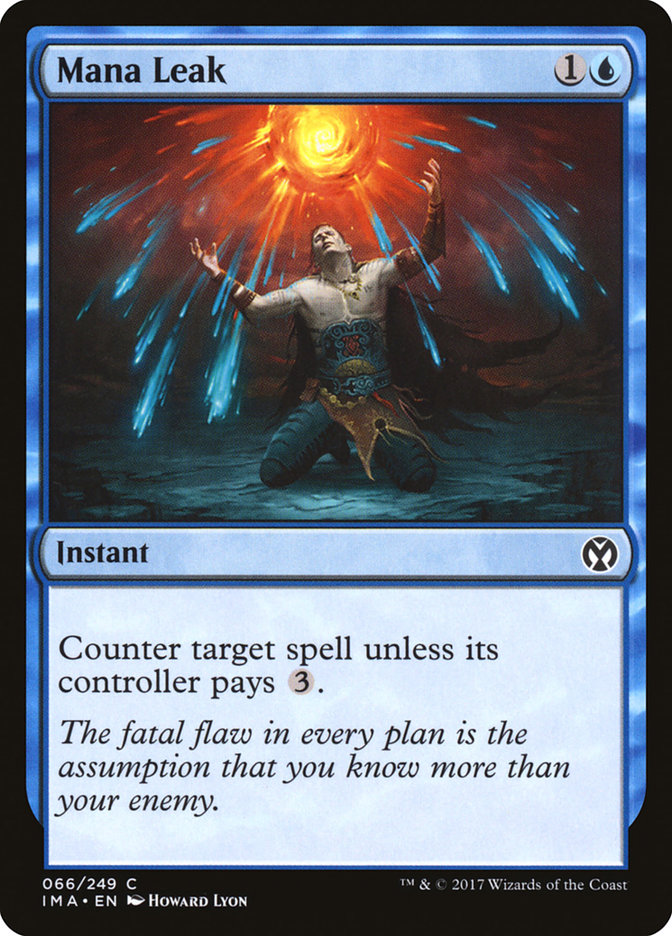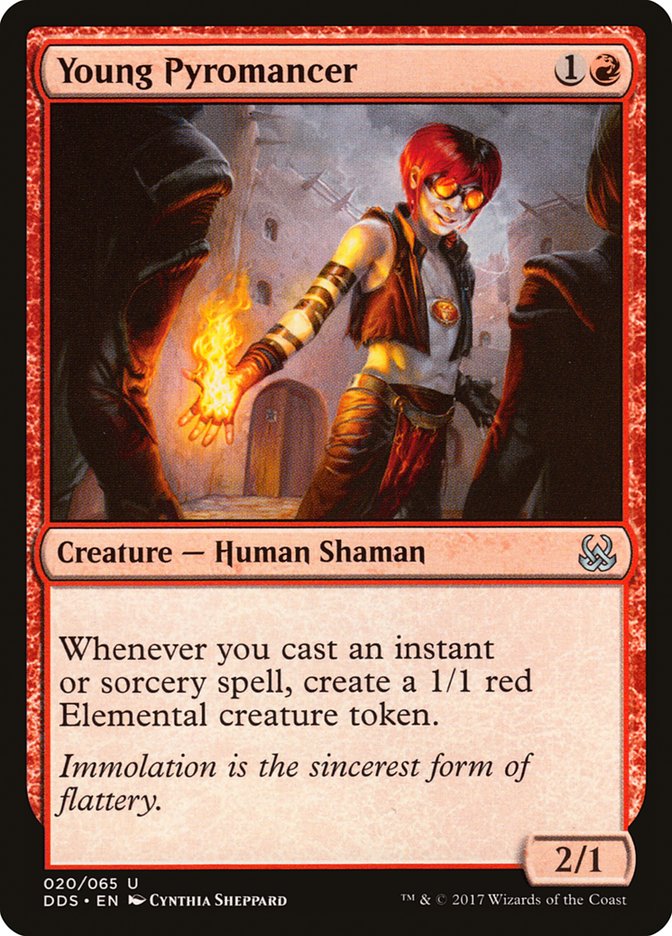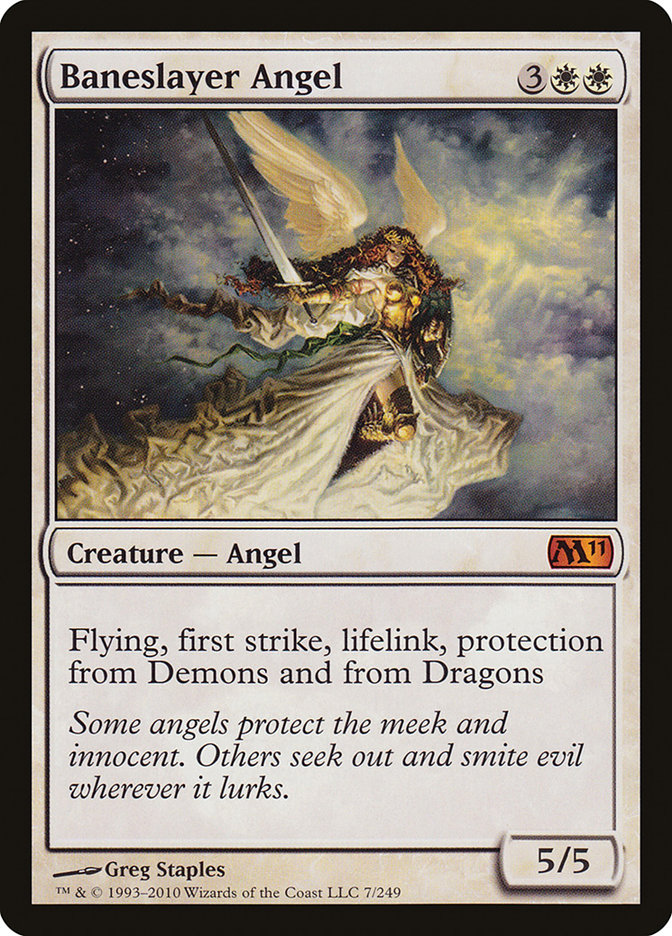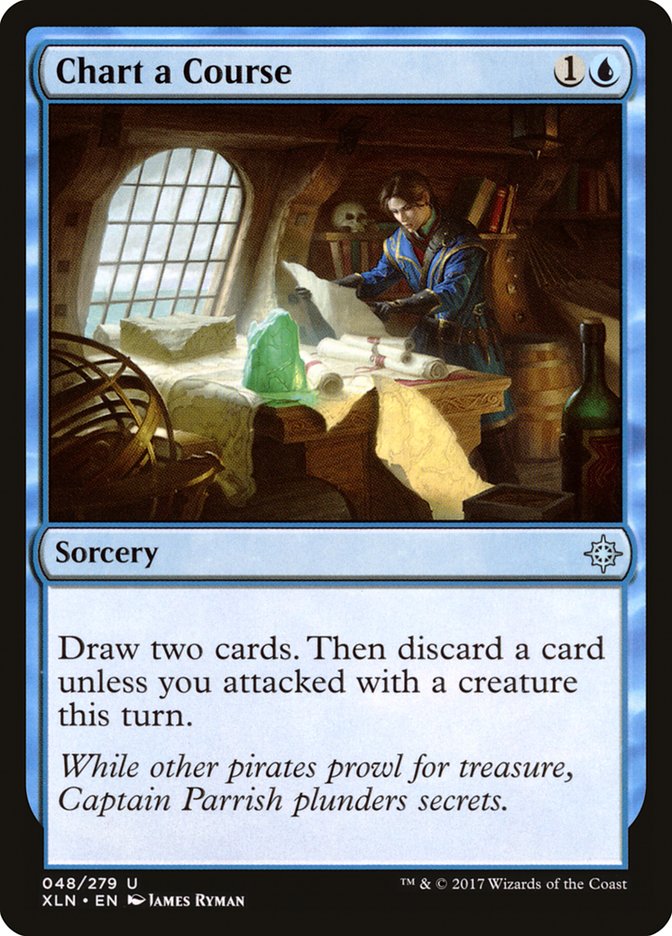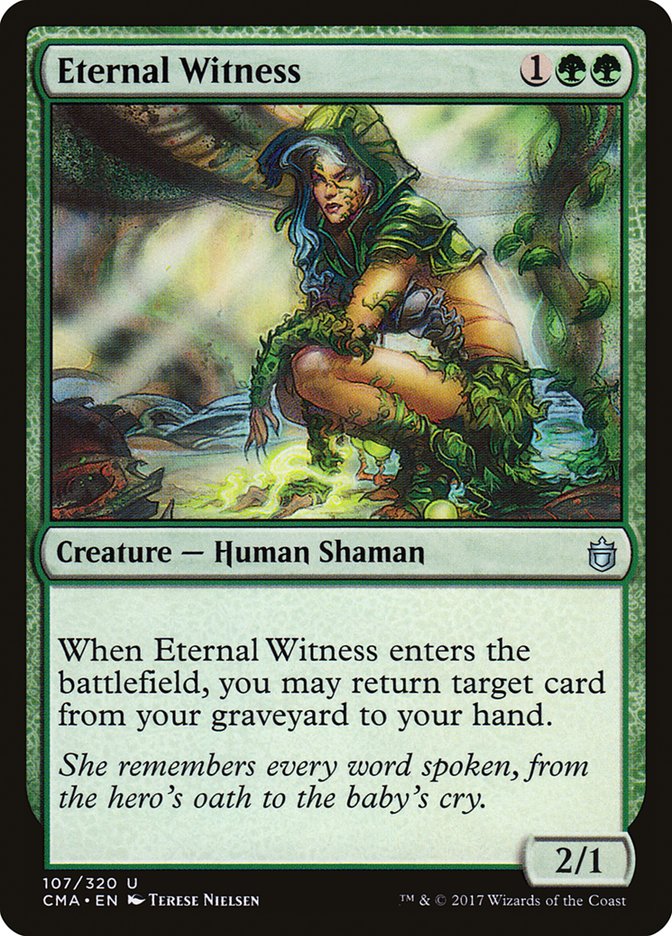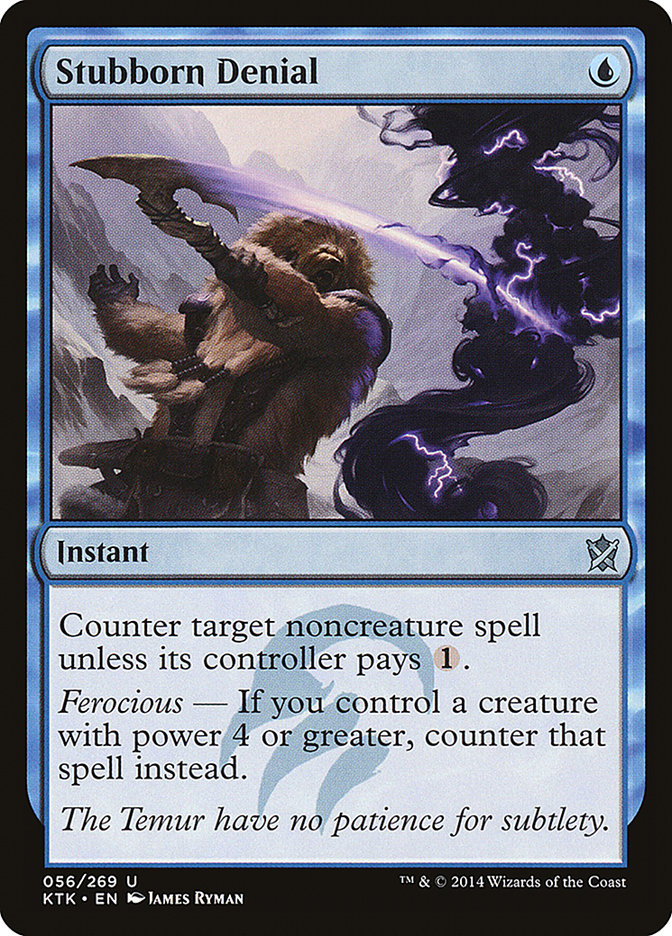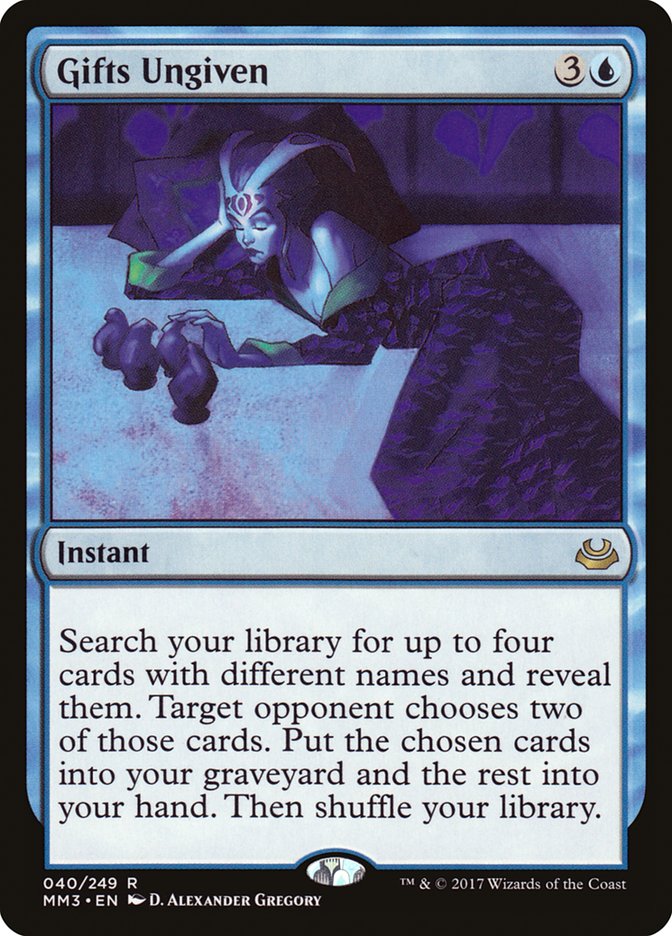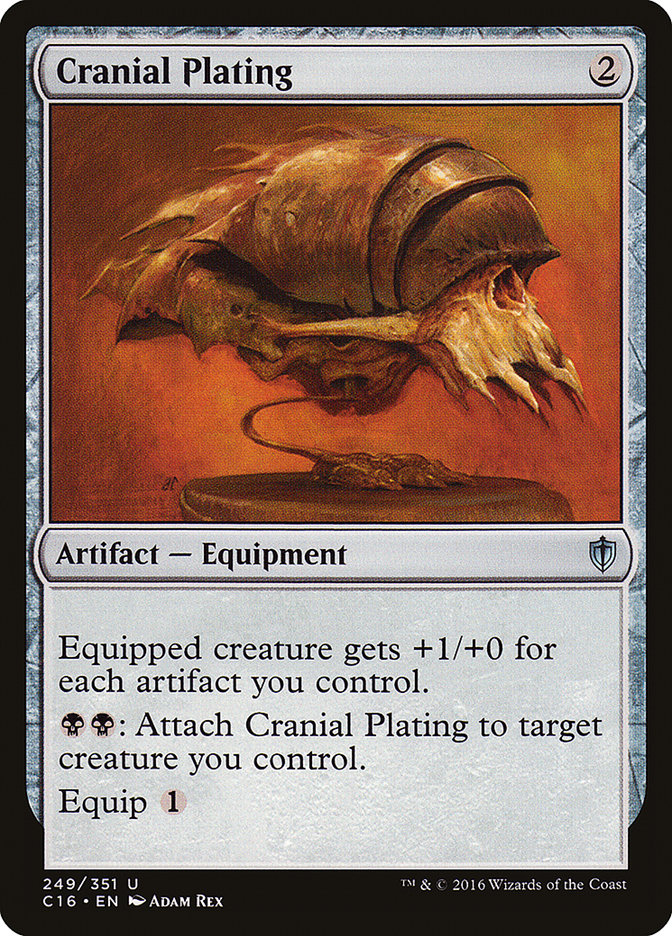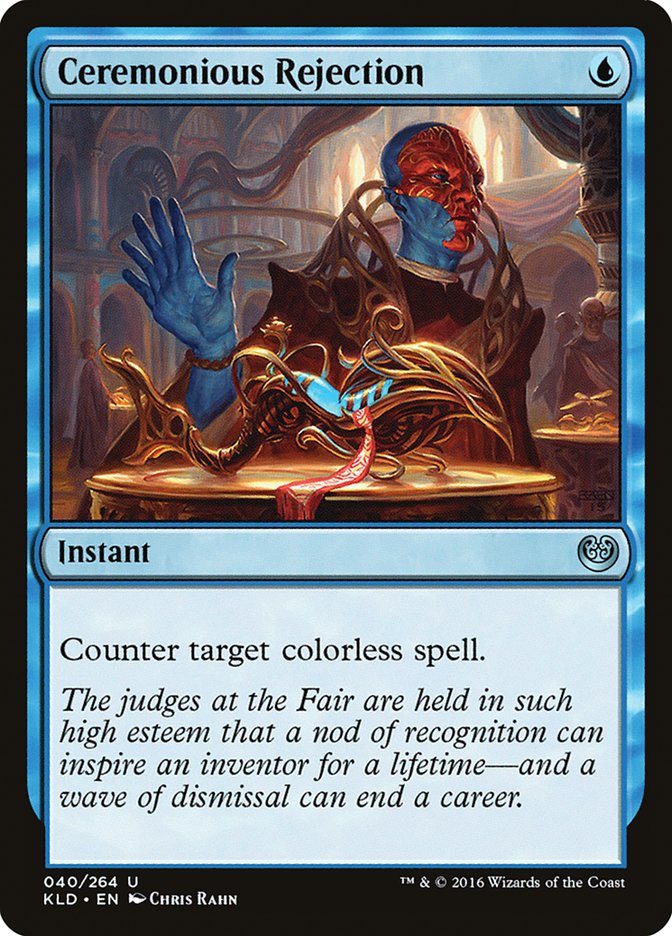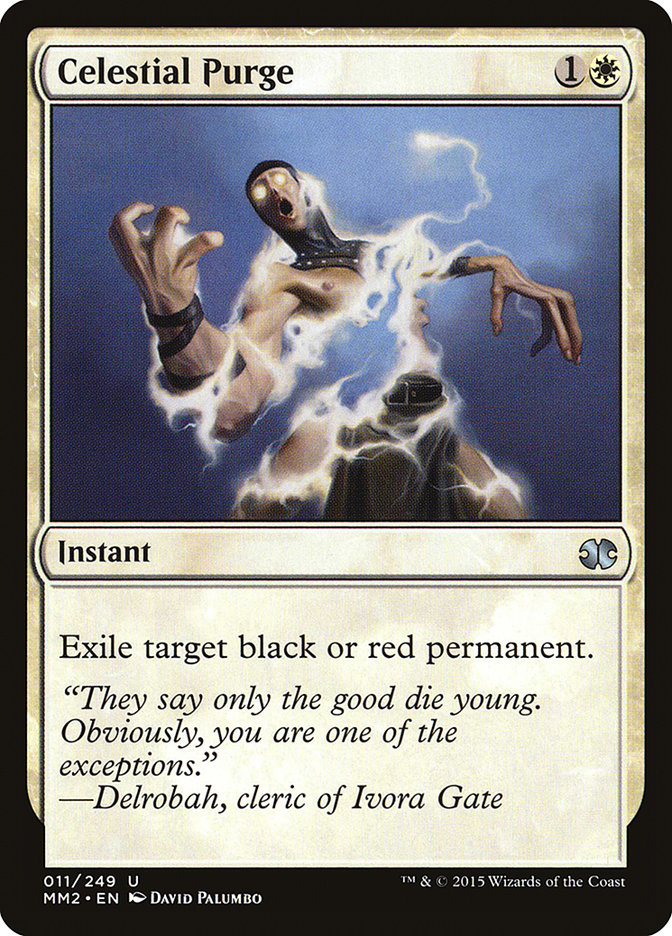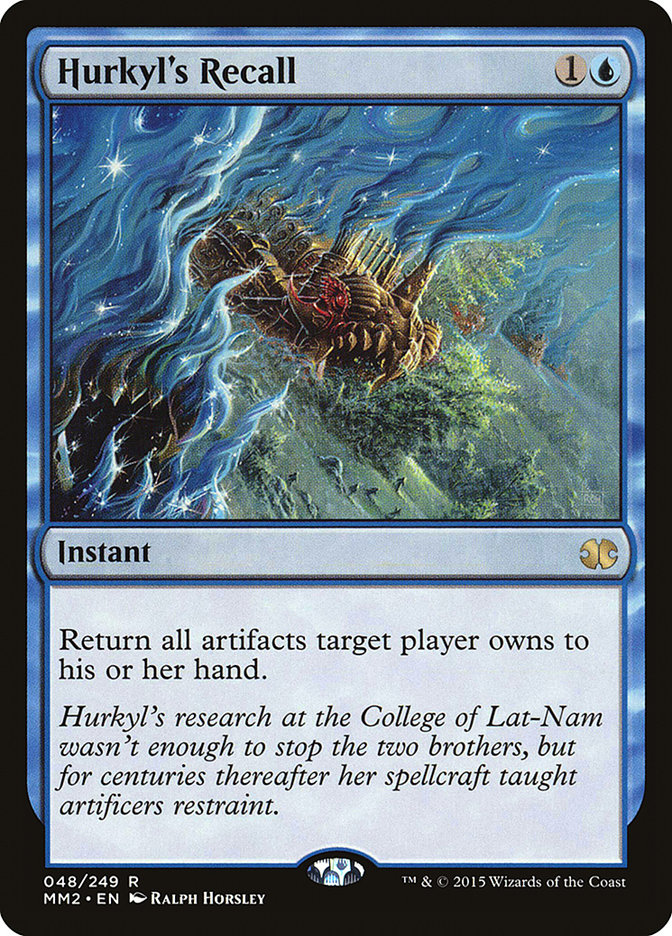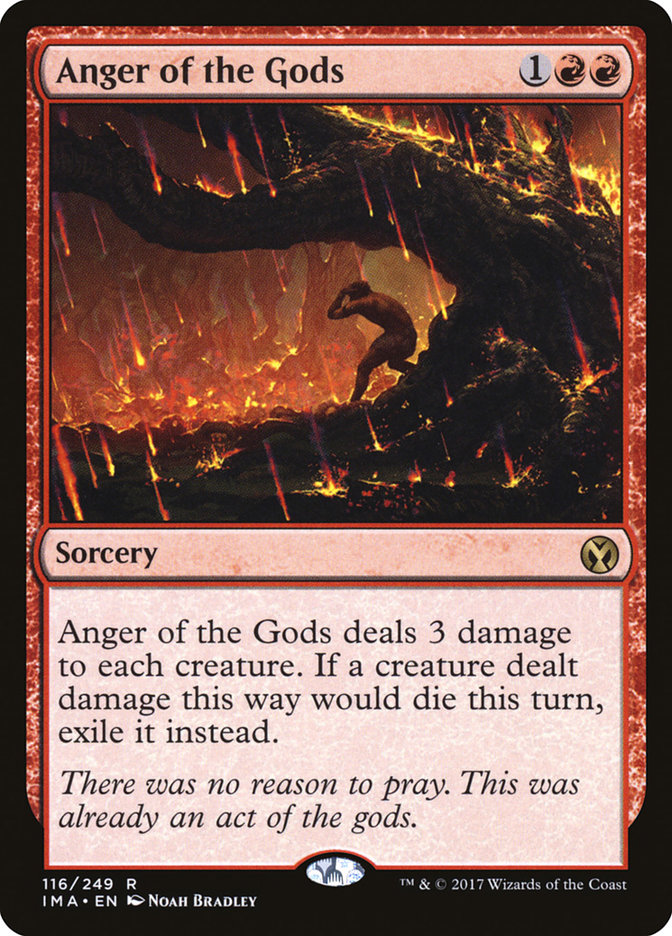Love Modern, or hate it:
You probably do.
Modern is Magic’s most divisive format. Whether it’s bans, unbans, or whether the format should be played on the Pro Tour, Modern has been at the center of many hot-button issues in the Magic community over the last few years. The format seems to engender strong opinions in everyone it touches.
Today, Modern has the only real case for being Magic’s most popular format. It consistently gets high viewership numbers on Magic Online streams and SCG Tour coverage alike. Players come out in droves to play in Modern tournaments, droves a little bigger on average than those that show up to tournaments of other formats. Something about Modern is just plain likable.
Seen here: Cards people do not hate.
Still, it’s rare I go an entire Modern tournament without overhearing at least one conversation (and likely several) about how awful Modern is. There are too many decks. Matchups are too lopsided. You can’t profitably engage in metagaming. These are some of the complaints I hear, all of which tend to be geared around the idea that Modern, despite its popularity, is not a good competitive format.
And, to be fair, there is something behind all of these complaints. Specifically, the thing behind these criticisms is the incredible deck diversity of the format. The range of things you could sit across the table from at a Modern tournament is uniquely huge. Magic players are just not used to dealing with a format as wide as Modern.
Highly diverse formats require a different skillset for success from less diverse formats, but it can be really hard to realize that. Competitive players have a set of skills that they are used to leveraging to find success, and when those skills stop producing the same results, the idea that other skills have become more important isn’t always the go-to explanation. Instead, players fixate on how their skill is no longer helping them and decide the format just isn’t as skillful as what they’re used to.
If you are someone who doesn’t like Modern, who talks about things like excessive matchup variance or the pairings lottery to explain that dislike, this article is for you. This is my effort to reframe the unique elements of the Modern format in a way that makes them interesting, challenging, and enjoyable, rather than strictly upsetting.
Why Bother?
But first, let’s talk a little about why it’s important for competitive-minded Magic players to try to like Modern. Actually, before that, I have a confession to make.
I used to be one of those players decrying Modern.
I found Modern to be very frustrating when I first started playing the format. There’s nothing I hate more in Magic than losing a match on the deck registration sheet, but the format makes it impossible to play a deck that doesn’t have at least a couple of 20/80 matchups. To me, that fact was a huge strike against the format.
And so I decided that I did not like Modern. But as a player trying to do well at tournaments, I didn’t get to just stop playing Modern after I decided I didn’t like it. The tournaments I needed to play were Modern, and so I needed to play Modern.
So I kept showing up to play Modern, and kept being upset that I was forced to play the format. I tried to get better, I really did, but nothing I did seemed to work. Looking back, I can see that I was approaching the format from all the wrong angles, but in the moment it really felt like I was beating my head against a brick wall. My frustration with the format only grew.
Not liking the format during this time period actively damaged my growth as a Magic player. I had to play the format, and I accepted that. But I stubbornly clung to my ability to refuse to enjoy the format. Playing it and working on it was a chore, and I treated it as such. This attitude blinded me from figuring out how wrong I was in my approach to the format and kept me stuck in that rut for much longer than it otherwise would have lasted.
Clinging to a dislike of Modern for being a high-variance format does you no good. Fixing that idea in your head as the identity of the format makes it very difficult to appreciate the elements of the format that mitigate variance and reward skill. Being vocal about your dislike for the format is one way to cope with poor results and difficulties with Modern, but working to find things about the format that you enjoy is a far more profitable coping mechanism.
“What You Want to Lose To,” Not “What You Want to Beat”
All right, I’m done philosophizing. If you want to play competitive Magic, liking Modern is in your best interests. Let’s take a look at some of the dynamics unique to Modern that are interesting and intrinsically likable.
I think the biggest trap players fall into in Modern is trying to beat the best deck. Whether you think the best deck is the one that won the last tournament or the one that everyone is writing about, going out of your way to beat the best deck is a fool’s errand in Modern. You just can’t expect to play against any single deck, no matter how good or popular, enough to justify making it your goal to beat that deck.
In other formats, beating the best deck is a good plan. Standard has few enough decks that you can expect to see the best deck at least three or four times in a tournament, which is a great return on your effort. Legacy has a lot of decks, but they have much overlap; if you decide you want to beat Grixis Delver, you aren’t going to be out of sorts when you find yourself playing against a different Delver variant.
But Modern has a ton of decks that are all very different from each other. You can’t do the same metagaming in Modern that you would do in Standard and expect the same results. During the heyday of Grixis Death’s Shadow, when it was the uncontested best deck, I played 30 rounds across two back-to-back Open weekends without playing against Grixis Death’s Shadow once. Sure, that’s anecdotal and not really evidence of anything, but can you even imagine playing 30 rounds of competitive Standard without playing against Temur Energy a single time?
Creatures (36)
- 4 Meddling Mage
- 4 Noble Hierarch
- 4 Champion of the Parish
- 3 Mayor of Avabruck
- 4 Thalia, Guardian of Thraben
- 4 Mantis Rider
- 3 Reflector Mage
- 4 Thalia's Lieutenant
- 2 Thalia, Heretic Cathar
- 4 Kitesail Freebooter
Lands (20)
Spells (4)

Humans is the new big thing in Modern. Probably not the best deck, but definitely the exciting up-and-comer. If a deck in Standard was getting the buzz and results that Humans has been getting lately in Modern, there’s no way I would enter a Standard tournament with a deck that I thought had only a medium Humans matchup. But in Modern, I’m not going to worry very much about Humans. Don’t get me wrong, I’ll have a plan and know what to do if I find myself in that situation, but if I end up with a 40% Humans matchup, I won’t be sweating it. Odds are it won’t matter.
Instead, I like to think about Modern in terms of what I want to lose to. When talking about Modern decks, suggesting a deck is usually met with a couple of decks that are its worst matchups. I find that every deck in Modern has at least two awful matchups. The format is just too wide to avoid them. Instead of trying to beat the decks on the rise, try and position yourself so that the decks you lose to are the ones on a downswing.
This kind of thinking is just the other side of the metagaming coin, but it’s the side we don’t look at nearly as much. We’re used to thinking about how to beat the good decks, not about which decks we get away with playing now that their predators are poorly positioned. It’s a cool inversion of normal Magic patterns, and one I’ve enjoyed utilizing since figuring out to give it a shot.
Your Sideboard Is More Fluid Than You Think
Of course, it’s not always easy to just play whatever deck you want. Most of us don’t have access to the entire format. The good news is that how you build your sideboard in Modern has a lot of influence on what your good and bad matchups are.
There was an argument going around a few years ago that the problem with Modern was that fifteen cards in the sideboard was simply not enough to cover all of your bases in such a diverse format. At the time, I agreed. Having 25 sideboard cards would likely mean that you could prepare for every deck and would change the nature of Modern. Now, I think that would make the format lose much of its charm.
In a lot of ways, how you build your sideboard for a tournament in Modern is the most important act of metagaming you get to do. If it were easier, it wouldn’t be metagaming but mere preparation. Metagaming isn’t just figuring out where you want to be good; it’s figuring out where you can afford to be bad.
The hang-up a lot of players have is that they don’t feel like they have a lot of control. They look at their pile or list of potential sideboard cards and have around twelve must-includes. The decision they are making is what three cards to pick from a list of twenty ideas they had, and they feel like their choice of three cards isn’t impactful.
They’re right.
In truth, they are severely limiting themselves by locking-in those first twelve cards. Sure, they’ve always played those cards in this archetype. Sure, those cards have been very good for them in the past and they know how to use all of them. None of that means they are still good choices right now.
Take a look at these two Grixis Death’s Shadow lists:
Creatures (16)
Lands (19)
Spells (25)

Creatures (16)
Lands (18)
Spells (26)

These are two Grixis Death’s Shadow lists from SCG Tour tournaments almost six months apart. The maindecks, by my count, are six cards different, including four Opts in Donegan’s list that Nelson could not have played if he wanted to, as they weren’t legal at the time. Six maindeck cards, four of which are different cantrips and removal spells, don’t make much of a difference.
On the other hand, the sideboards are seven cards apart. That’s very nearly half of the sideboard different! If you kept looking, you could even find successful lists that didn’t sideboard some of the eight cards these two lists shared. Treat your sideboards like everything can be cut and you’ll find more success and increased enjoyment in your ability to make impactful decisions.
When deciding what cards to play in your sideboard, I advocate a similar approach to what I outlined previously: pick the decks that you think it’s okay to lose to right now. Look for sideboard cards that have applications across multiple matchups that you want to be competitive in, and play those. Know how to use the tools you have for every matchup, and accept that sometimes you just can’t have the tools you want.
A Dynamic Approach to Matchups
As a direct consequence of sideboards in Modern being more fluid, the format requires a much more robust understanding of matchups than that needed in other formats. In Standard, you can get away with not having a complete understanding of the foundations of a matchup because you know all the cards involved, their roles in the matchup, and their relative value at different points in the game. That is, instead of understanding the “why” of the matchup, you know all the “hows.”
You can’t get away with this in Modern because the “hows” will change. Sideboards in Standard are more static and you can expect all of your opponents to have approximately the same cards for you, or maybe that they will be using one of two known plans. In Modern, you have to know all the different one-ofs they could have decided are good against you and how those impactful cards change the dynamics of the matchup. You have to know how the presence or absence of a card in your sideboard that week changes how you have to play the games. In short, the exact construction of both players’ sideboards greatly alters the matchup dynamics.
If you decide to cut Anger of the Gods from your Jund sideboard one week because you think Counters Company is on a downtick, when you end up playing against Counters Company, you have to know how not having Anger of the Gods to fall back on changes your gameplan. Modern is hard, and it rewards high-level, fluid understanding of matchups more than it rewards rote memorization and pattern recognition.
Further, the importance of the exact configuration of sideboards makes Modern the format where playing the human sitting across from you and not their cards is the most important. Or rather, where being able to decipher what your opponent’s plan is and what that means about how their sideboard is constructed is the most important. Your opponents are people just like you, facing the same decisions you faced. Sometimes they will overprepare for your deck, and sometimes they will have skimped on the cards they need. Being able to figure stuff like that out on the fly based on how your opponent is playing is critical to Modern success.
Ultimately, enjoying Modern comes down to being able to accept that the skills you need are different from the ones you use elsewhere in Magic. Magic is a hard game, and Modern is a hard format. It’s punishing and unforgiving, and can appear capricious to those who aren’t paying quite enough attention. But, like everything else in Magic, the difficulty just makes the reward all the sweeter when you do figure it out.
Welcome aboard.



